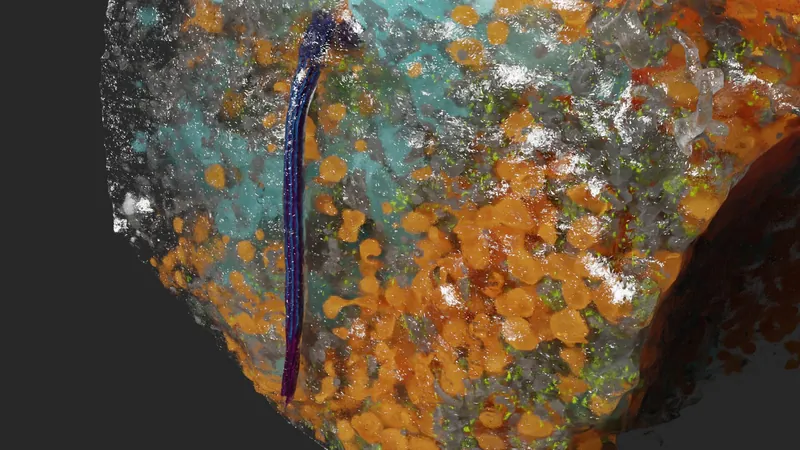
Unraveling the Mysteries of Beta Cell Cilia: A Breakthrough in Understanding Type 2 Diabetes!
2024-11-04
Author: Siti
Introduction
Dysfunctional primary cilia of pancreatic beta cells may be a hidden culprit behind type 2 diabetes (T2D). Despite their critical role, the structural and functional enigmas surrounding these tiny cellular appendages have remained largely unexplored—until now! An international research team, spearheaded by scientists from the Paul Langerhans Institute Dresden (PLID) at Helmholtz Munich in collaboration with esteemed institutions like Yale University and the Human Technopole in Italy, has made strides in understanding these cilia with cutting-edge imaging techniques, as detailed in a recent publication in *Nature Communications*.
The Role of Pancreatic Beta Cells
Pancreatic beta cells are essential for producing insulin, the hormone that regulates glucose absorption from the bloodstream. When these cells fail to produce enough insulin, it can trigger the onset of T2D. Researchers are intrigued by the potential link between cilia dysfunction and diabetes, as emerging evidence suggests that the disturbances in these cilia could contribute significantly to the disease's pathogenesis.
Research Techniques and Findings
Most cells in the human body are equipped with immobile primary cilia, slender projections stabilized by a scaffold of microtubules that help transmit external signals. The team, under the guidance of Dr. Andreas Müller from PLID, employed innovative imaging methods—including volume electron microscopy (vEM) and ultrastructure expansion microscopy (U-ExM)—to visualize the intricate, three-dimensional structure of the beta cell cilia within their natural context.
Their groundbreaking research encompassed cilia from both human and animal beta cells. The team meticulously investigated the microtubule organization of the cilia's axoneme, leading to exciting findings about how these structures are stabilized and how they function. For the first time, they revealed distinct patterns of microtubule lengths that terminate at varying points within the cilium, which may influence its signaling capabilities.
Implications of the Research
The implications of their research extend beyond mere structural examination. The scientists discovered that beta cell cilia not only coordinate internally but also interact dynamically with surrounding cells, forming synapse-like connections. This suggests a complex signaling network between beta cells and neighboring islet cells, which may be crucial for maintaining glucose homeostasis.
Interestingly, the preliminary data also hints at an interaction between the primary cilia of beta cells and nervous tissue cells, indicating a potential link between ciliary function and neuronal signaling mechanisms. As Dr. Müller explained, 'The structural data of this study highlight the primary cilia of beta cells as critical nodes for islet cell function.'
Future Directions
Looking ahead, the team is determined to delve deeper into the interplay between primary cilia and T2D development. By unraveling the molecular pathways and mechanisms at play, they hope to shed light on targeted therapeutic strategies that could aim at restoring ciliary function and potentially reversing the course of type 2 diabetes.
Conclusion
Stay tuned as this groundbreaking research continues—understanding the secret life of beta cell cilia could change the narrative of diabetes treatment forever!



 Brasil (PT)
Brasil (PT)
 Canada (EN)
Canada (EN)
 Chile (ES)
Chile (ES)
 España (ES)
España (ES)
 France (FR)
France (FR)
 Hong Kong (EN)
Hong Kong (EN)
 Italia (IT)
Italia (IT)
 日本 (JA)
日本 (JA)
 Magyarország (HU)
Magyarország (HU)
 Norge (NO)
Norge (NO)
 Polska (PL)
Polska (PL)
 Schweiz (DE)
Schweiz (DE)
 Singapore (EN)
Singapore (EN)
 Sverige (SV)
Sverige (SV)
 Suomi (FI)
Suomi (FI)
 Türkiye (TR)
Türkiye (TR)